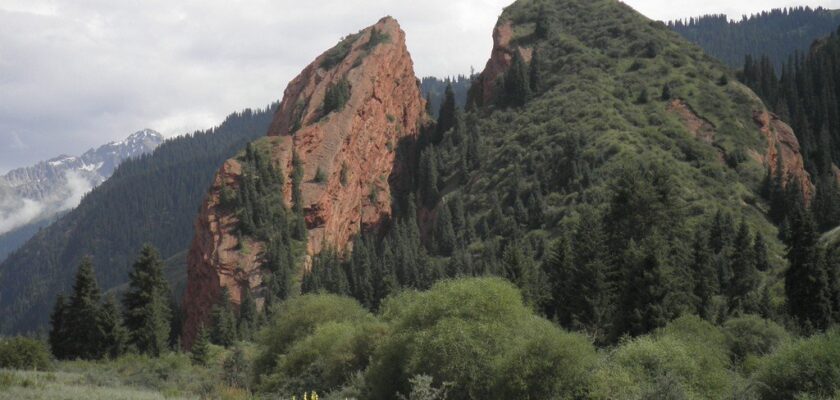Jeti-Ögüz
Jeti-Ögüz is a mountain gorge with picturesque red rocks, located 30 km southwest of the Kyrgyz city of Karakol. Through the gorge flows the river of the same name, which originates on the northern slope of the high ridge Terskey Ala-Too. From the Kyrgyz language, the name of the gorge translates as “seven bulls.”
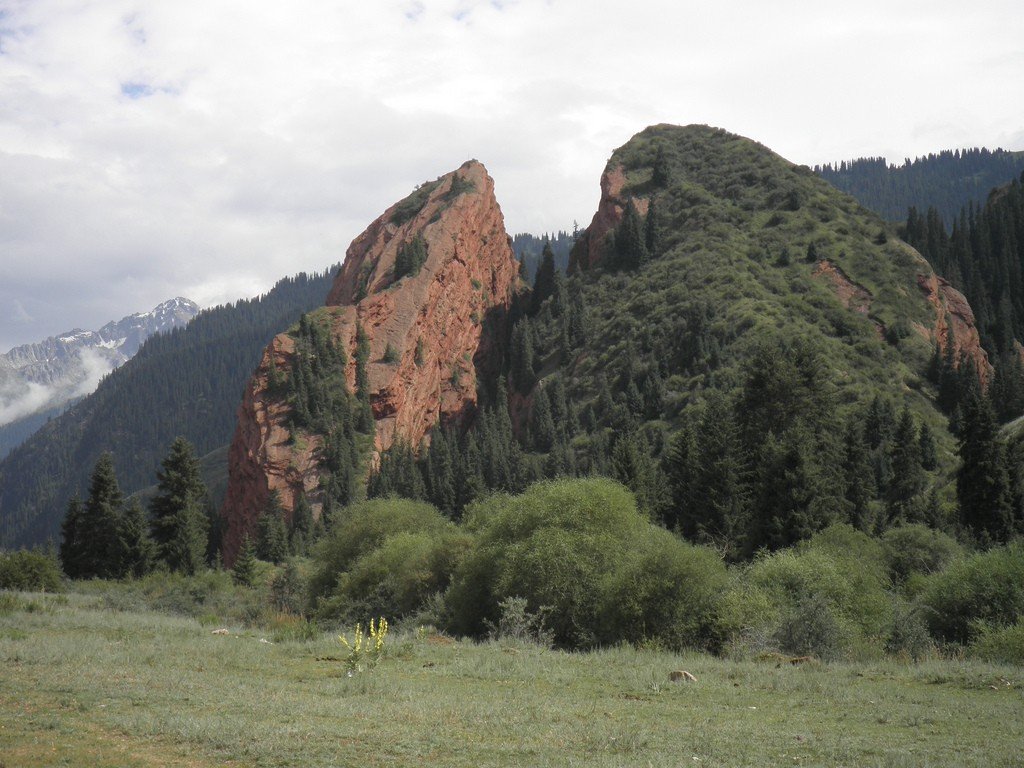
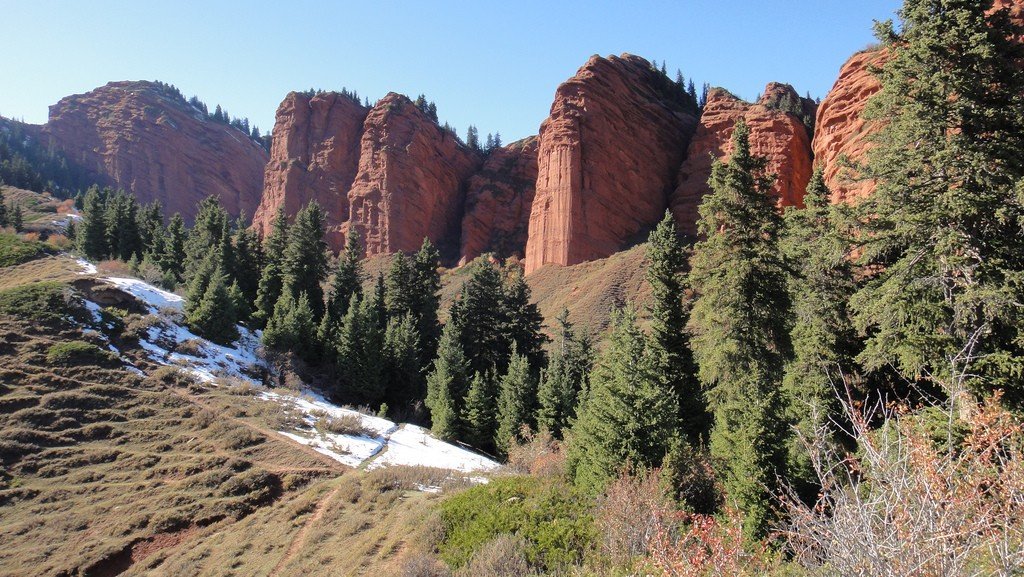
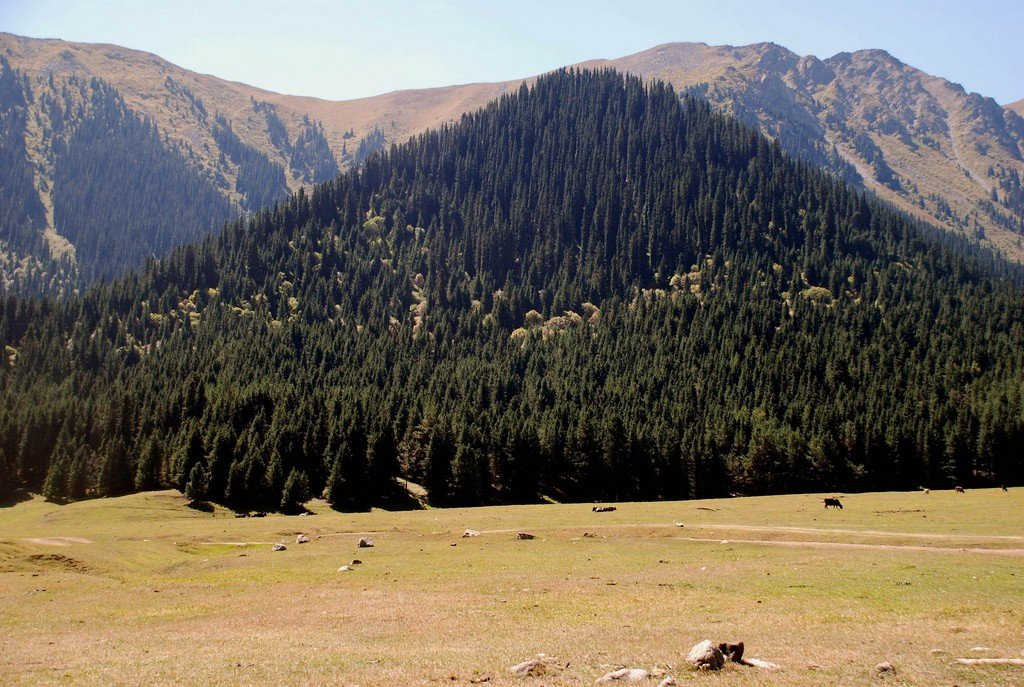
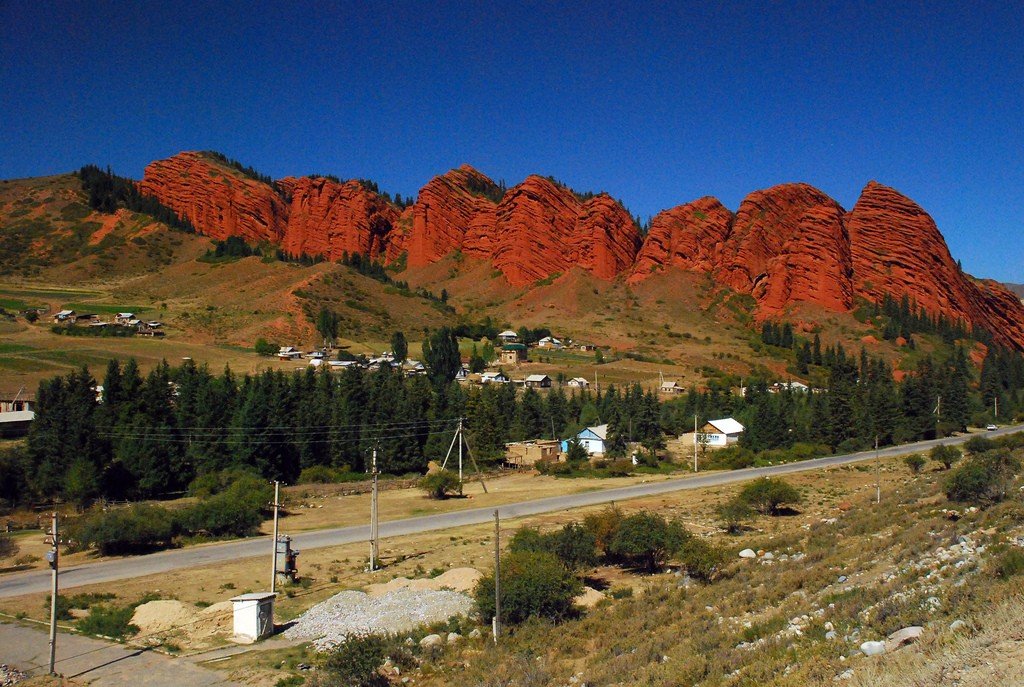
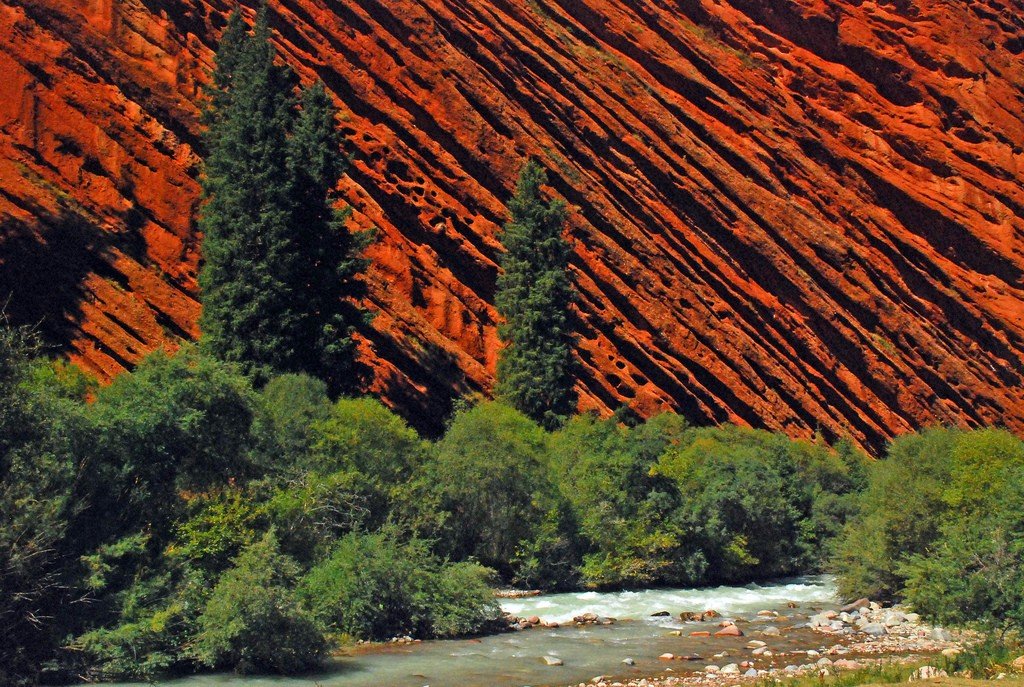
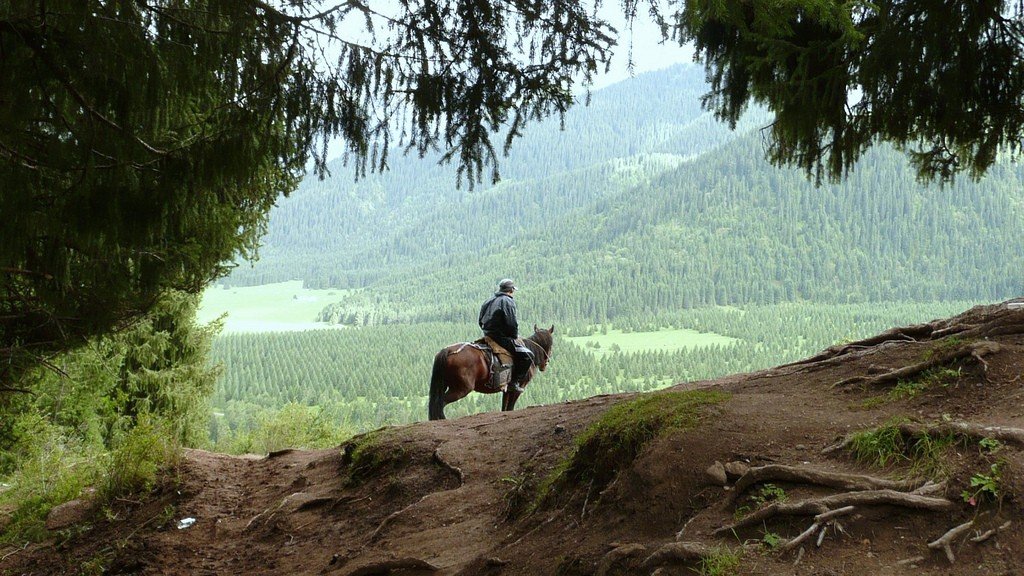
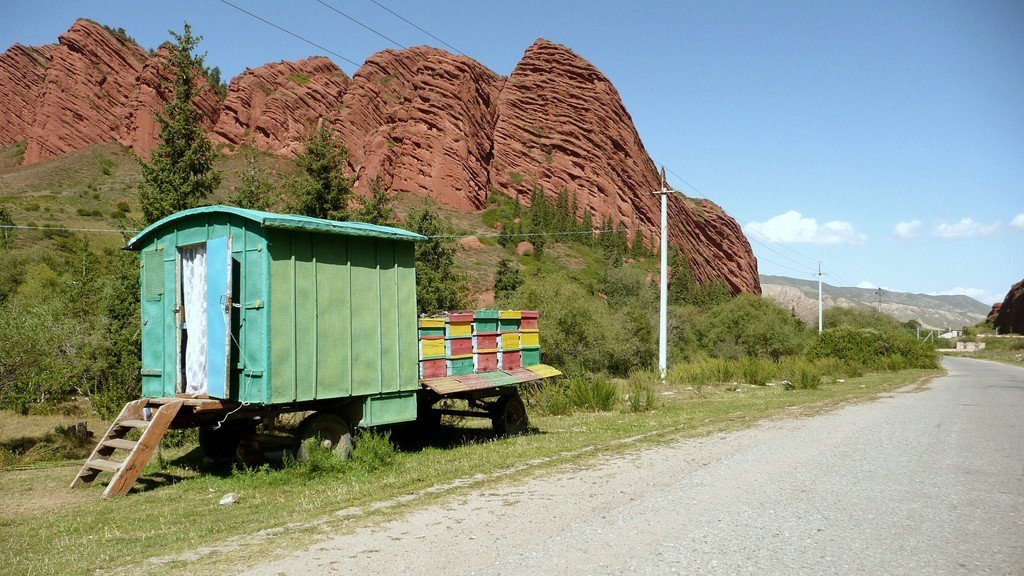
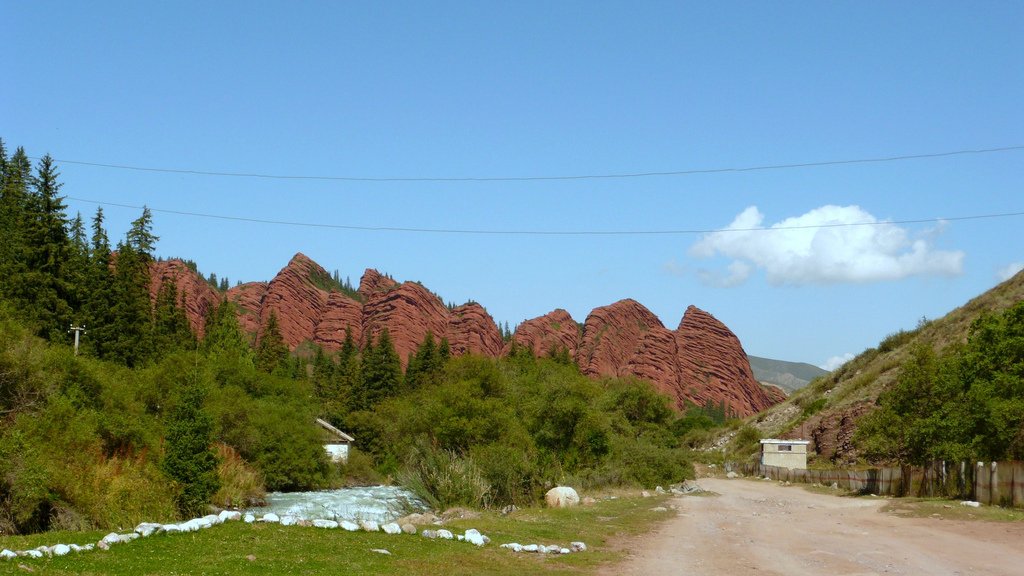
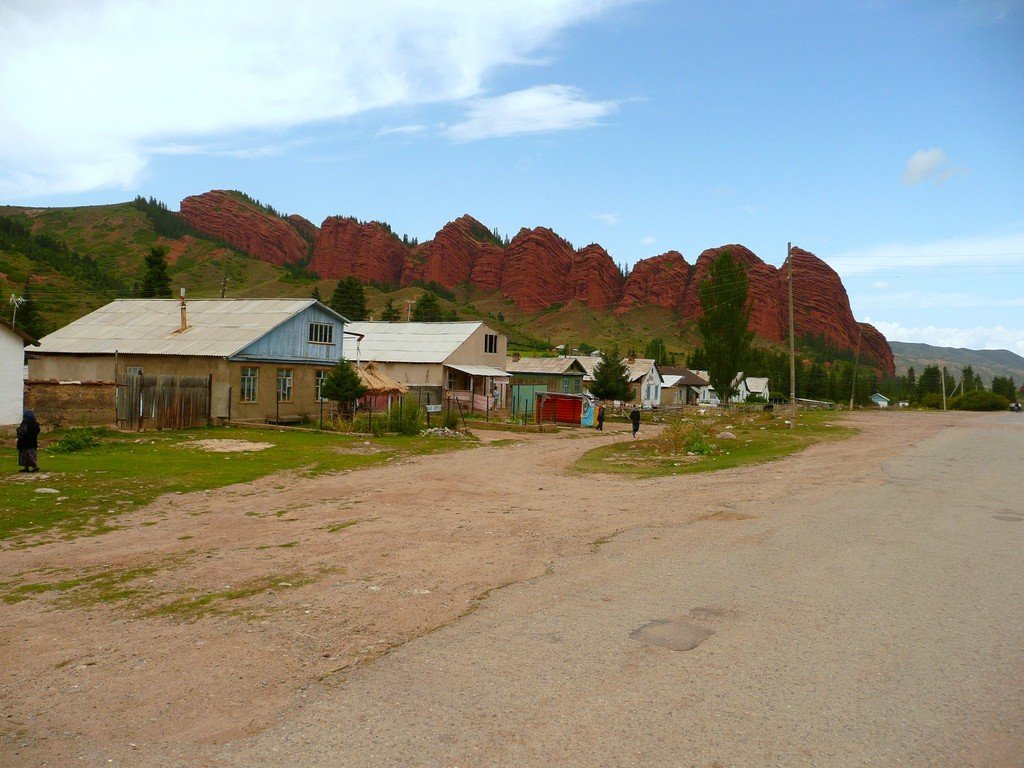
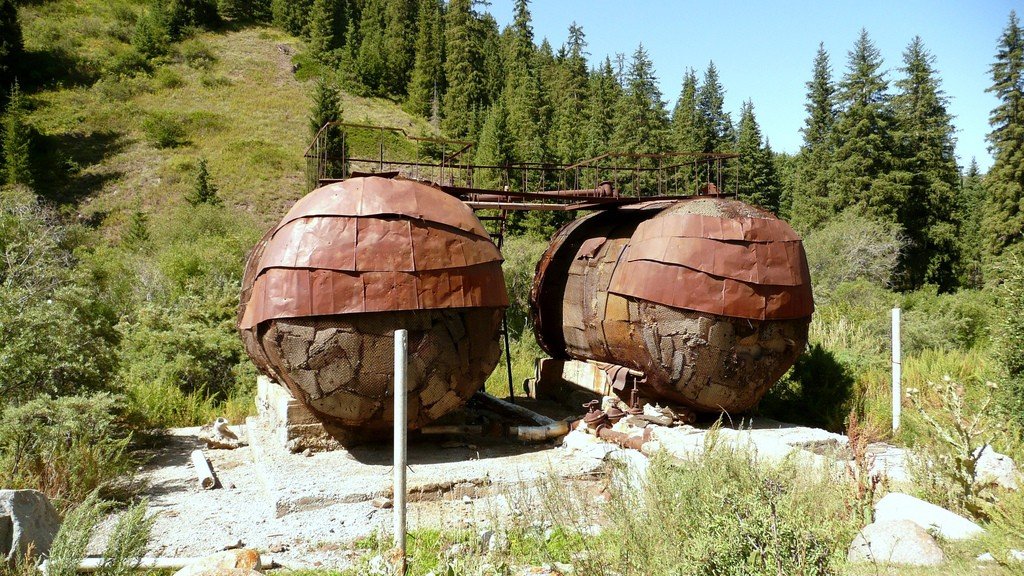
Video: Jety-Oguz
ContentsHighlights
Jeti-Oguz is mesmerizing in its beauty. The mountain gorge stretches for 37 kilometers and is covered with lush vegetation. The red-brick rocks have long become one of the tourist brands of the Issyk-Kul region, and their photos are often published in local guidebooks and advertising brochures.
.
At the turn from the highway A363 to the valley of the river Djety-Oguz is a large village of the same name. It has a mosque, an ancient cemetery and several burial mounds dating back to VII-V centuries BC. In the valley of Jeti-Oguz, at an altitude of about 2200 meters above sea level, there is a popular sanatorium. To the north of it rise majestic cliffs composed of beautiful reddish sandstones and gravelites. Jety-Oguz is known as a balneological resort, and people come here for the beautiful climate, healing mud and geothermal springs.
.
5 km south of the resort is the Glade of Flowers. Poppies start blooming on it from May, and during the whole summer season one flower replaces another. In order for travelers to admire this splendor, yurt camps are arranged on the glade during the warm season. Here you can ride horses and taste Kyrgyz national cuisine.
.Tourists coming to the Jeti-Oguz Gorge make independent trips to the mountain lake Ak-Jailoo and waterfall Kok-Jailoo, which has a height of 20 meters. The trails along the slopes of the valley offer picturesque views of the Jeti-Oguz River and the high mountains surrounding the gorge. The Heartbreak Rock is also considered a local attraction. Its outline is very similar to a human heart, and recently this part of Jeti-Oguz has become very popular among couples in love.
.Legend
The locals have a legend about the origin of the name Jety-Oguz. Very long ago, two rulers lived in the mountains. They were noble and powerful khans. One of them had a beautiful wife. The other khan was tormented by envy and one day stole her away. The husband was very worried and passionately wanted to return the captive, but the kidnapper did not even want to listen to him.
.Then the evil khan organized a seven-day memorial feast or toh. During the feast he killed one bull each day, and on the last day of the trizna he committed a terrible atrocity and killed the kidnapped woman. The blood from her wounds splashed to the ground and flooded the valley. In the raging scarlet flood all relatives and friends of Khan the villain died. And later, seven red rocks grew on the places where the blood of the innocent captive had fallen.
.Weather in Jeti-Oguz
Winter in Jeti-Oguz is moderately mild and low snowfall. The average temperature in January is -9 °C. In summer it is never hot in the mountains. In July the temperature rises up to +15 °С. During the year in the gorge falls about 500 mm of precipitation, and most of it falls in April and May.
.
Flora and fauna
The Djety-Oguz Gorge has the status of a zoological preserve. For 25 km along the valley grow Tien Shan spruce trees, and above the forest zone, at an altitude of 3000 meters above sea level there are picturesque mountain meadows or dzhailoo. From May to fall, they are full of flowering plants such as poppies, mountain edelweiss, elecampane and alpine daisies.
.
The nature reserve preserves rare inhabitants of the mountains – snow leopards. There are also wild boars, bears, mountain argali and roe deer. Among the birds in Djety-Oguz live vultures, eagles, pheasants, grouse and rock partridges – puffins.
.Zdravnitsa
In the Djety-Oguz gorge there is a sanatorium of the same name, built in 1932. Transparent mountain air, mild climate, alpine herbs and healing springs help everyone who cares about their own health. Thermal waters of Jeti-Oguz were described in the middle of the XIX century by Russian traveler Petr Petrovich Semyonov-Tanshansky. They contain a significant amount of radon – 127 nCi/l. In addition, geothermal water contains calcium, fluorine, chlorine, iodine, manganese, bromine, zinc, copper, nickel and aluminum. The total mineralization of the springs reaches 13 l/he.
.The health resort has 250 places for accommodation of guests. The sanatorium is equipped with comfortable rooms, which can accommodate from one to three people. In Jeti-Oguz go for recreation, as well as to treat diseases of the musculoskeletal system, disorders of the peripheral nervous system, skin and gynecological diseases.
.
As therapeutic procedures are used bathing in warm mineral baths, the temperature of which ranges from +25 ° C to +42 ° C.
. It should be borne in mind that people with acute allergic reactions, as well as those suffering from heart disease and vascular disease, bathing in radon springs should be very cautious.
.
In addition to baths at the mountain resort use healing mud, which are extracted at the Jergalan field, located 43 km from Jeti-Oguz. In addition, patients of the sanatorium are available galvano mud treatment, different types of massage, paraffin therapy, light therapy, and in summer time – delicious koumiss.
.How to get there
Bishkek, the capital of Kyrgyzstan, and Jety-Oguz are separated by about 400 kilometers. The journey to the gorge begins from the Kyrgyz town of Karakol, which in Soviet times was called Przhevalsky. From Karakol to Jety-Oguz is the easiest way to get there by cab. The distance to the gorge is about 30 km. In addition, from Karakol through the village of Jeti-Oguz to the sanatorium there are shuttle buses. They depart from the city bazaar “Ak-Tilek”.
.The mountain gorge can be accessed as part of organized tours. Day trips to Jeti-Oguz are organized by travel agencies from Karakol and Cholpon-Ata. Motorists should keep in mind that the road ends at a clearing, 1.5 km below the right tributary of the Jety-Oguz – the river Teleta, and above the valley are only tourist trails.
.